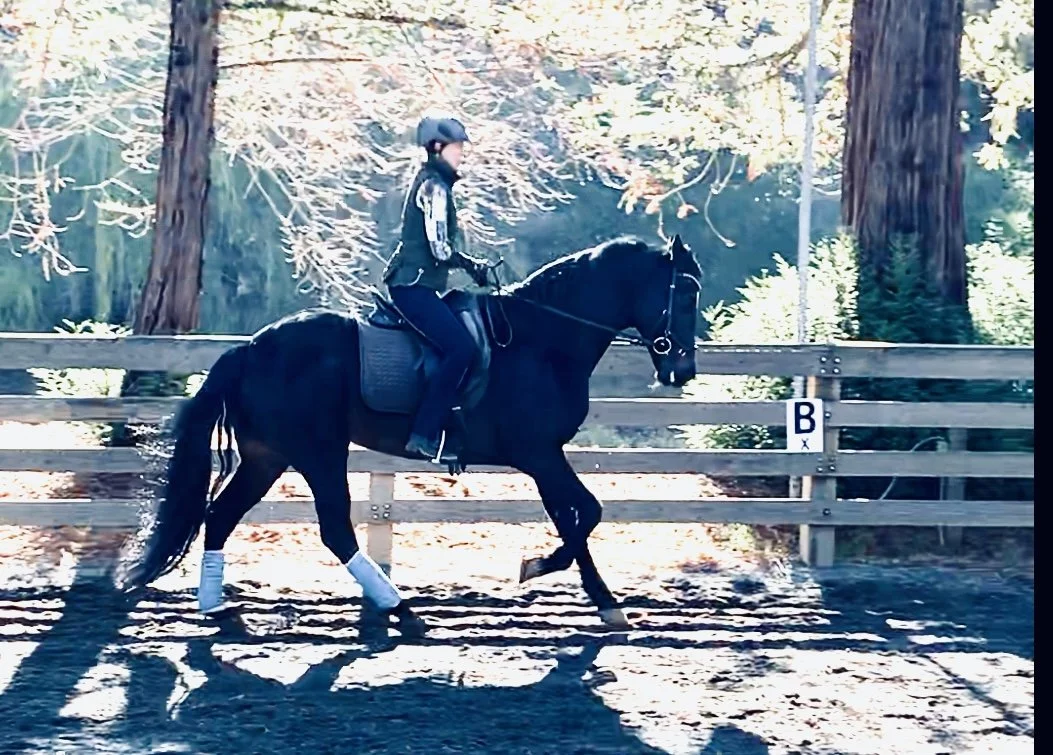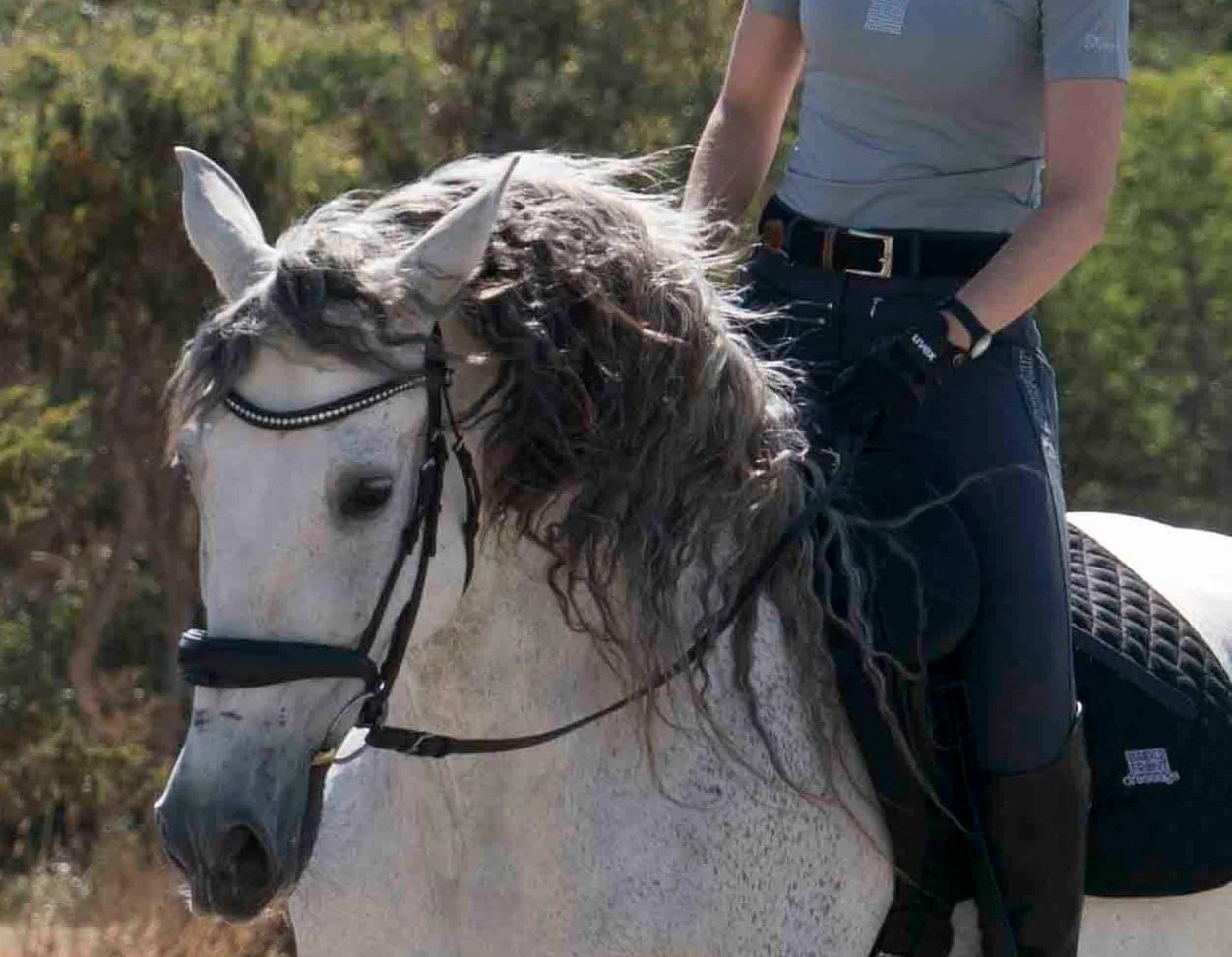4 Dos and Don'ts When Utilizing Training Videos
Over the past couple of years, I’ve done a lot equestrian-themed work out of the saddle as well, with loads of projects for wehorse (Europe’s leading online riding academy) as well as Jessica von Bredow-Werndl*, the current olympic, European, and German champion in dressage.
This work required the consumption of more than 120 hours of horse training videos plus countless blogs and smaller videos (and transcribing and translating them entirely and/or writing summaries). These courses included all sorts of schools and philosophies spanning the poster children of the German FN (Dr. Britta Schoeffmann, Klaus Balkenhol, Christoph Hess…) classical icons (Anja Beran…), French Légèreté (Karl Phillipe, Bea Borelle…) to Working Equitation (Pedro Torres), Jumpers and Eventers of international fame (Bettina Hoy, Ingrid Klimke)… liberty training and bridle-less riding (Alizée Froment, Arian Aguilar…), to massage (TTouch, Masterson…), rider fitness (DressurFit(R)… you get the idea.
As a trainer, I also teach theory outside of lessons and always encourage my students to investigate and understand concepts on a deeper level through literature, and yes, also video. However, there are a few things to keep in mind for this to be an enriching, not confusing and demoralizing experience.
1) Do Find out About the Trainer’s Philosophy and Background
For example: Is the person trained in the Austro-Hungarian tradition of the Hd.V.12/ FN or Spanish Riding School in Vienna? Do they follow “modern dressage” training as demonstrated by many riders who compete at the national/international level? Do they come from a Western/Natural Horsemanship background? Have they developed their “own” method? Do they even have a “method”? Do these methods mesh with our modern understanding of horse psychology and physiology? These answers are extremely important for context. It’s very well possible to adopt a certain exercise from someone without buying into the whole system, but once it goes beyond that one exercise, things get very easily very confusing for the horse (and human).
2) Don’t Skip the Prerequisites
Sometimes the prerequisites are spelled out, sometimes they are implied. Either way, everything we do with our horses is a game of putting little building blocks in place in a logical manner, and if any are missing, be it on the side of the horse or the rider, these holes will show up either in exercises that simply won’t happen or a horse who is starting to show behavioral problems at best and lameness/health issues at worst.
You may or may not have the same excellent seat, confidence, and experience as an olympic rider. For example, if you’re starting the changes on a green horse who tends to charge off or buck, this may be just normal baby stuff to a pro, but it may seriously shake your confidence and in turn also your horse’s.
Safety is another big reason to cross off the prerequisites first. Say you want to start riding in a neck ring and the trainer stresses that the horse should reliably stop on voice command in any situation first, that of course is a long and laborious process with its own challenges. Skipping it, however, could render both you and your horse in the hospital.
3) Do Have Competent Eyes on the Ground
While training videos generally come with the disclaimer that they are there to augment, not replace, a competent coach/instructor on the ground, I can’t stress enough how important that is, because: Things are not going to happen exactly like in the video, and unless you’re experienced enough to know why your horse did the thing instead of what he was supposed to do, and how to step-by-step explain the correct answer to him, the video is going to be just one other thing that didn’t work for you and your horse.
4) Don’t Dismiss the Training Scale
A horse is a horse is a horse. Biomechanically, they need to learn to move in a certain way so that they can carry a rider safely and comfortably. For the longevity of the horse, make sure that you create and/ or maintain a rhythmic, relaxed, straight, balanced, and through horse. So wanting to get into Working Eq is great, but it won’t be your horse’s “thing” either if the dressage basics aren’t there. Unless you’re never going to sit on your horse, this means all the pesky things you have to do to have an independent seat and are able to give aids clearly and quietly might be a lot less fun than learning how to hold the garrocha.
(*Jessica von Bredow-Werndl’s book “Heaven on Horseback,” outlining her no-punishment training philosophy, her take on animal rights, rider fitness, or meditation, and her journey from “the girl who loves horses” to Olympic champion is available on amazon or as an e-book at Barnes & Noble.)






